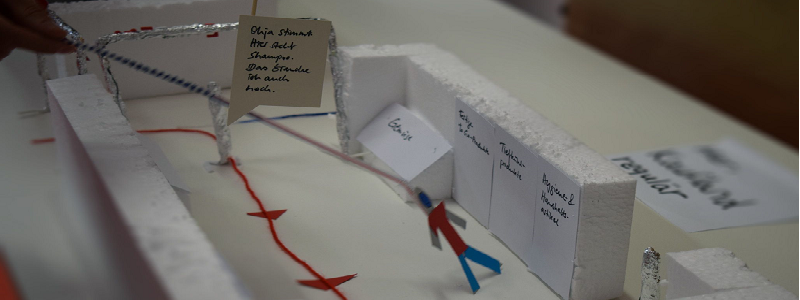Testing
STATS
Suggested Time
60 -120 min (for several testing sessions)
Level of Difficulty
Moderate
Participants
Team and ideally people you are designing for. If that’s not possible then some people who were not involved in the development so far should take the role of your potential customer.
Materials
Enter your text here
Templates/Printouts
Feedback Collection Grid (pdf)
Feedback Collection Grid (.pub)
Digital Tools for Prototyping Testing (pdf)
Digital Tools for Prototyping Testing (.pub)

Description:
Testing is an important step for you to get direct feedback from your customers on your initial digital business model idea and to better understand them. It also supports you in developing something that is of added value for them which they want to use later on. Testing is always the basis to further improve your product/services and also to rethink your general idea.
Stages:
- Set up your testing team:
- moderator, responsible to explain the context of the prototype to help the user understanding the situation and to ask questions;
- actor, responsible to take a specific role when presenting the scenario;
- observer, responsible to observe everything what the user is doing, taking notes, if possible, film everything;
- Plan your testing by:
- defining what you want to get out of the testing;
- defining what you want to tell the users;
- defining clear, simple and open questions;
- planning the complete testing scenario;
- selecting your testing group with 3-5 persons (neutral persons not being involved in the development);
- Display your prototype and your business model canvas to the testing team. Highlight that you are looking for constructive positive and negative feedback;
- Introduce your prototype and your BMC by not telling too many details. Do not tell how it works, how the customer will benefit etc. Let the users experience it. Don’t sell your idea;
- Observe the users how they are using the prototype, ask them to tell you what they are thinking, how/what they feel when using/looking at the prototype;
- Ask follow-up questions, e.g. “what do you mean with…”, “why are you using it in this way…?”, “would they be willing to pay for it?” etc.
- Collect, write down the feedback. It will help you to develop and improve your ideas further (see feedback collection grid below);
- Keep getting feedback during the whole iterative development process.